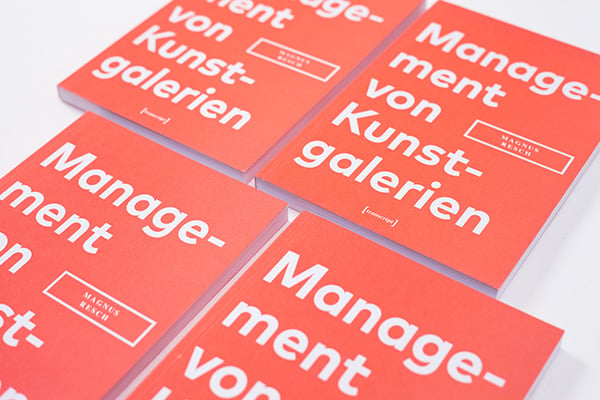Art Fairs
Will Market Aversion Snuff Out German Galleries?
A new book has startling conclusions about the state of the country’s primary market.

A new book has startling conclusions about the state of the country’s primary market.

Magnus Resch (30) is author of the #1 Amazon Bestseller “Management von Kunstgalerien” and founder of Larryslist.com, an art collector database. He teaches Art Management at the University of St. Gallen. An English version of his book will be available in 2015. Here, Resch traces some of the central arguments of that book for artnet News.
We love art galleries and the gallerists who run them: the anticipation of new shows, the visionary ambition it takes to find and develop new artists, and the entrepreneurial mindset that cultivates new locations, constantly redrawing any art center’s map.
Art galleries are the backbone of the art market and at the heart of a city’s cultural life. Yet, though galleries are located at the intersection of culture and commerce, money remains a dirty word, especially in Europe. It’s a factor only reluctantly acknowledged as a bedfellow of art. We hear next to nothing about the economics of art galleries.
German gallerists are particularly shy when it comes to discussing money, railing against the moral corruption and violations visited on art by commerce. German dealer Aenne Aebels once summed it up, loftily telling journalist Willi Bongard: “Our business has an aura and you are destroying it when you write about business stuff.” Aebels was speaking in 1965, but it could have been last week. Nothing has changed.
Except, of course, that things have changed. So let’s talk about the business stuff. According to my research, some 40 percent of German galleries operate at a loss. And 80 per cent generate annual revenues below half a million euros, including their artists’ share of sales. To put it bluntly, you don’t want to be a gallerist.
In theory, Germany should be fertile ground for those who want to make a career in art dealing. The country is justifiably proud of its art scene. It sports a wealth of important museums, galleries, and collectors. Yet almost nobody is making money, especially in Berlin. Galerie Kamm closed its doors only a few weeks ago (see “Berlin’s Galerie Kamm Will Close in September“), as did Martin Klosterfelde in 2013—these are just two victims of the severe market conditions under which galleries have to operate.
Torn between artistic excellence and the financial pressure of running an international art gallery, many dealers struggle to earn enough to survive and are running out of hiding places from harsh market realities.
This is a downbeat assessment for sure. Some German gallerists do actually make money. So, to discover what they were doing differently—and more importantly, what they were doing right—my team and I interviewed 1100 respondents in the largest-ever study of the German-speaking primary market.

Management von Kunstgalerien by Magnus Resch
Photo: Karolina Rosina, courtesy Magnus Resch
Perhaps unsurprisingly, we found that successful galleries today have profited from abandoning a number of cherished traditions of other orthodox art dealers. They apply a different, more diversified, and ultimately more lucrative organizational model.
This model profits from multiple revenue streams and locations catering to various stages in an artist’s life cycle. Young, emerging artists are shown in a very low-cost off-site location. More established artists are shown in a traditional gallery space. And, living artists of genuine prominence and artists dealt with on the secondary market are represented in a private showroom.
A common thread that emerged from the survey is that gallerists avoid this third sector of transactions (secondary market activities) at their peril. We repeatedly saw less successful galleries concentrate on only up-and-coming artists. That is admirable, but is also too often a loss-making and time-intensive business. To be viable in the long term, it requires the revenue potential of more high-end dealing. Successful galleries cannily use secondary art market income to cross-finance the capital and time invested in building up young artists. And they do this right from the start. Growing with the artists is a nice idea. But if they don’t grow you die. So better diversify.
Our survey also killed off the long-held myth that location was everything. It turns out that location has no impact on success. Postcode matters not a damn in Germany. Gallerists who opened their doors in prominent locations such as Berlin’s Auguststrasse are well advised to save their money and relocate immediately.
Gallerists are also notoriously short-sighted about salaries, which come a poor third to rent and fair fees in the hierarchy of art gallery balance sheets. If galleries want to succeed, they must hire good people. And good people cost money. Salaries must go up. Some forward-looking galleries have understood this, rewarding their employees with a variable bonus on top of their base salary.
Without doubt, it’s tough to be a gallerist. The great news is that there are numerous opportunities for innovation that could save these galleries. But that requires a drastic rethinking of business practices. The first step? Start loving the market. Let’s talk about money.